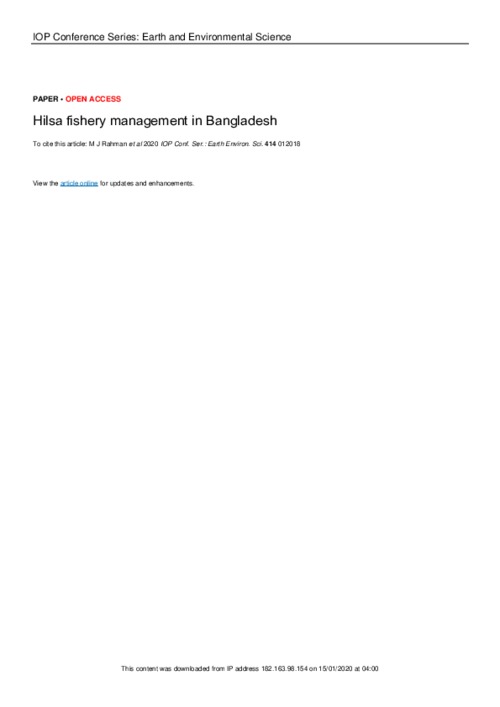Hilsa fishery management in Bangladesh

Citation
Rahman, M. J. et al. (2020). Hilsa fishery management in Bangladesh. Conference Series: Earth and Environmental Science, 44: 012018.
Hilsa shad (Tenualosa ilisha), is a biologically, nutritionally, economically, socially and culturally important species in the Bay of Bengal and Persian Gulf regions, but Bangladesh enjoys the major share wherein it contributes about 517,000 tons/year. However, this important fishery declined in the late 1990’s that led the Government to formulate the Hilsa Fishery Management Action Plan (HFMAP) and started its implementation from 2005. Since then, hilsa production increased @5%/year till 2015. To improve the annual incremental production further, Department of Fisheries (DoF) and WorldFish have jointly been implementing “Enhanced Coastal Fisheries in Bangladesh (ECOFISH-Bangladesh)”, a USAID supported project (2014-2019). The project supports the DoF and local communities to establish a science-based “adaptive co-management” that focuses on the brood hilsa protection, juvenile conservation, illegal gears control, and overall ecosystem resilience involving all stakeholders. As a synergistic impact of all the initiatives taken and the proactive supports of the law enforcing agencies, the declined hilsa fishery from both inland and marine habitats revived @ 11% annual incremental total hilsa catch. The increased hilsa production and average size (from 510 g to 915 g) resulted in increased household income of fishers by 52%. The interventions additionally improved catfish abundance and other fish biodiversity.
Permalink
Date Available
Type
Publisher
Countries
Copyright
CC-BY-4.0
Research Themes
Topics
Language